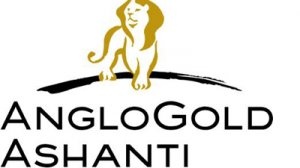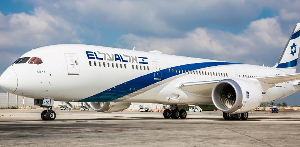AngloGold Ashanti on Thursday announced full-year adjusted headline earnings of $924m, the second-highest ever, despite a difficult year in which an unprotected strike and safety stoppages caused major disruption to its South African operations.
The company is planning to deliver higher margin production from its South African mines, which were shuttered by a strike between the end of September and the beginning of November.
Exploration spending across the group has been rationalised, corporate and operating costs are undergoing a review, some assets deemed to be non-core are being considered for sale and capital expenditure has been prioritised.
“We’ve moved decisively to ensure that we continue a strong recovery from a difficult end to last year,” Joint Interim Chief Executive Officer Tony O’Neill said. O’Neill has oversight of all operating and exploration functions while fellow joint interim CEO Srinivasan Venkatakrishnan has accountability for all financial and corporate matters.
AHE for the year was $924m, or 239 US cents a share, which included about $208m lost to the strike, compared with $1.3bn, or 336 cents a share in 2011. Production in 2012 was 3.94Moz at a total cash cost of $862/oz, which included about 235,000oz lost to the strike.
The annual production compares to 4.33Moz at a cash cost of $728/oz in 2011. AngloGold Ashanti continues to seek to improve the quality and diversity of its portfolio. The main greenfield projects at Tropicana, in Australia, and the Kibali joint venture, in the Democratic Republic of Congo, remain on track to produce gold within a year.
The expansion of Cripple Creek & Victor, in the US, also remains on track.
Production in 2013 is anticipated to grow to between 4.1Moz and 4.4Moz at an improved total cash cost of $815/oz to $845/oz.
More focused investment in the business has helped AngloGold Ashanti forecast stable capital expenditure of about $2.1bn for 2013, while corporate costs are expected to decline by about 18% to $240m. Expensed spending on exploration and feasibility studies is forecast at about $377m, 18% lower than in 2012.
“Our focus is on improving margins and delivering returns, rather than production growth, and that will continue to drive our decision making,” Venkatakrishnan said.
During October, the company took a decision to terminate its underground development contract with Mining and Building Contractors Limited at its Obuasi mine in Ghana in an effort to improve production and costs.
Geita, in Tanzania, was the group’s largest production contributor, improving annual production by 7% to 531,000oz at a total cash cost of $660/oz.
The rest of the group continued to see positive results with annual production in the America’s region rising from 891,000oz to 953,000oz and the Australian operations increasing output to 258,000oz from 246,000oz.
“AngloGold Ashanti continues to deliver the best returns on capital amongst the gold majors, which reflects strict discipline in capital deployment over the past five years,” Outgoing CEO Mark Cutifani said. “That’s been core to our strategy since early 2008, when we outlined our vision for the company.”
Fourth Quarter
Fourth-quarter AHE was $7m, or 2 US cents a share, compared to $295m, or 76 US cents a share in the fourth quarter of 2011. AHE was affected by the lower volumes and higher cash costs during the quarter, reflecting the impact of the strike in South Africa which eroded $208m of earnings and the change-over of the mine development contractor at Obuasi and other factors which had a negative impact.
A strong performance from the Americas region was primarily offset by the strikes in South Africa.
Despite challenges faced in South Africa, Standard & Poor’s affirmed the investment grade rating on AngloGold Ashanti’s publicly traded debt following an extensive review.
Major milestones were reached outside of South Africa, most notably the termination of the underground development contract at Obuasi, where sub-par development performance has been identified as a key constraint to the mine’s performance in recent years and which had also hurt earnings in the fourth quarter.
Business News of Thursday, 21 February 2013
Source: Citi FM













